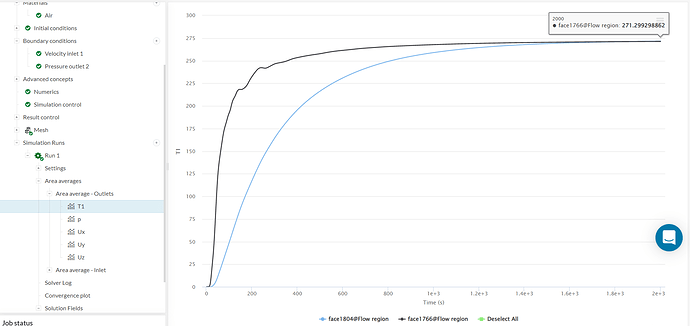Hello Ryan,
Before going through details, it’s worth mentioning that passive scalars do not have any units attached to them and it’s not mandatory to interpret them as a concentration. It just happens that using concentrations is one of the easiest/most useful ways to use scalars.
In your case, I agree with the interpretation of point 1. For the amount removed, in case you are using a volumetric scalar source, the way that I interpret is that you define a concentration as the flux, and you simply multiply the concentration by the volume of the source to see how many mg’s are being added or removed. It would be "Amount of scalar " (mg/s) = 260 857.5 mg/s
There are at least a couple of projects where you can verify this (e.g. this one by myself and the combination of [this][Deleted by author] and this post).
Just to give you a quick calculation of my case:
- Volumetric flow rate at the inlet = 0.0066 m3/s
- Volume of the scalar source = 0.00225 m3
- Volumetric source flux = 800 ppm
- Total amount of scalar being released = 0.00225 * 800 = 1.8 mL/s
- Theoretical average concentration at the outlet = total amount of scalar being released / volumetric flow rate at the inlet = 1.8 / 0.0066 = 272.72 ppm
If you look at the results of the run, they are very close to this value.
Cheers
